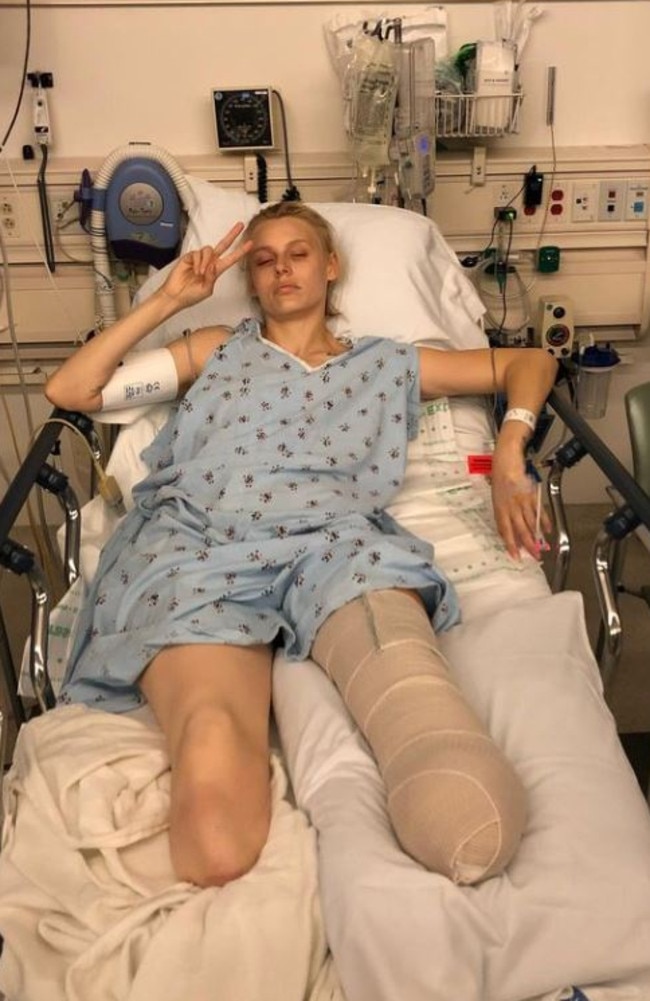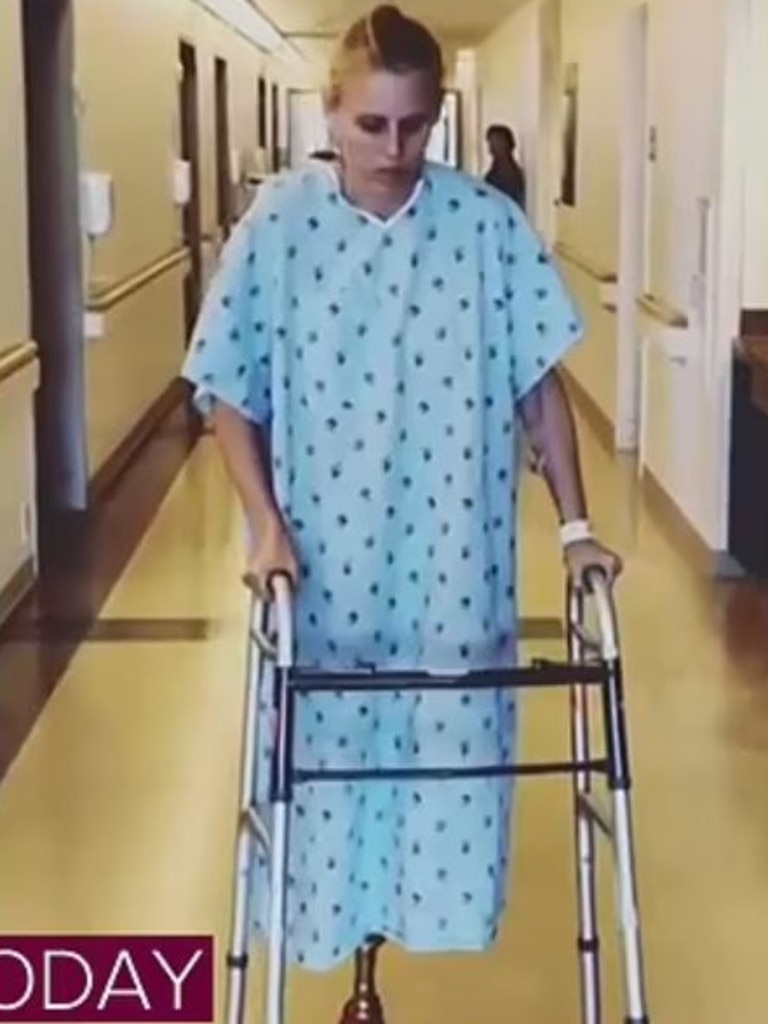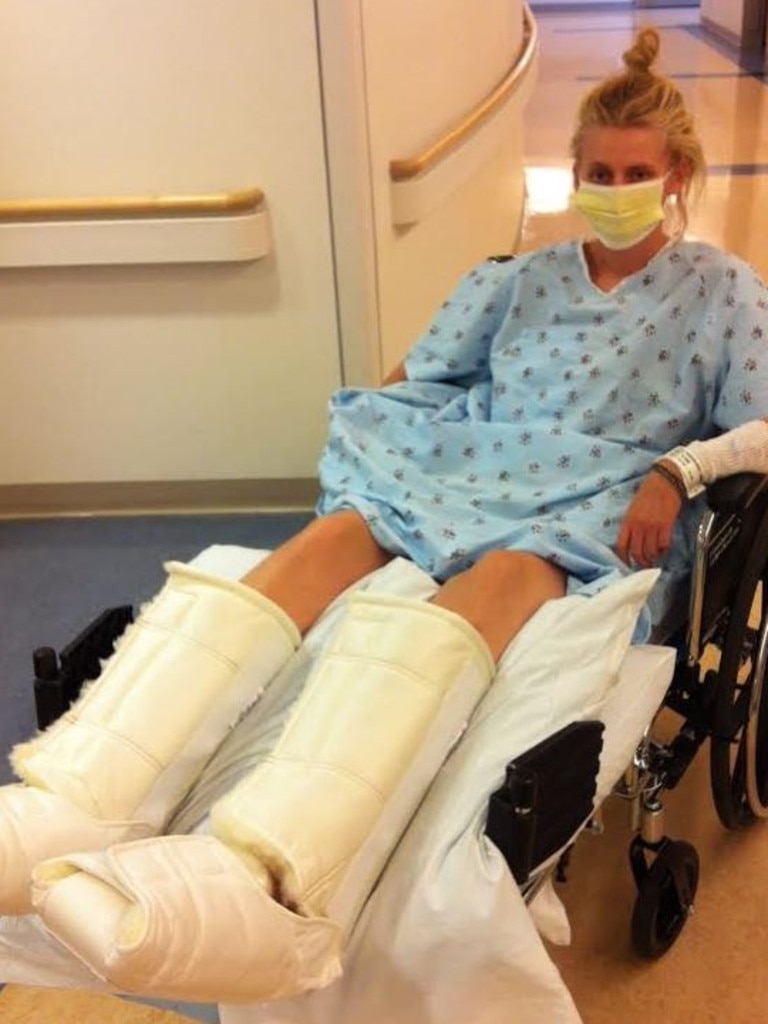Model was ‘ten minutes away from death’ after using a tampon
A model has issued a horrifying warning after she lost both her legs and nearly died after using a tampon.

A model has shared how she was “minutes away from death” after using a tampon.
Los Angeles model Lauren Wasser revealed that she lost both of her legs and almost died simply from using a tampon.
The 36-year-old spoke about her harrowing experience to Australian podcast hosts and ex-reality stars Brittany Hockley and Laura Byrne on their show Life Uncut.
Lauren said that she contracted Toxic Shock Syndrome (TSS) when she was 24 from “normal tampon use” – dispelling the myth that the infection is only caused by leaving the menstrual product in for more than eight hours.

She explained although she was changing her tampons regularly, she still contracted the disease and her body began shutting down in a matter of hours.
“People think they’re invincible, no one is off-limits, TSS can happen to anyone at any time,” she shared on the podcast.
Lauren expressed concerns about tampons containing toxic chemicals and claimed that they are made using “bleach and chlorine” and were “sprayed with pesticides”, however many medical reports, including a study from the National Centre for Health Research, have denied this and confirmed that modern tampons do not contain these type of chemicals.
She told the podcast that she was changing her tampon regularly, every four hours, during one menstrual cycle back in 2012 when she began to experience a high fever and a flu-like symptoms.


Her mum ended up calling for a welfare check when she had not heard from her daughter for a few hours. Although police could see she was ill, they did not think she needed to go to hospital.
It was only when she was later found face down in her apartment just 10 minutes away from death that she was rushed to the emergency department.
She suffered two heart attacks and had to be put into a medically-induced coma as her organs were failing.
Lauren’s parents were told to “prepare for the worst” as they believed she only had a one per cent chance of survival.
“They couldn’t figure out why this young, healthy 24-year-old girl was dying before them,” she said.


“I was given a one per cent chance of survival, they told my parents to start planning for my funeral.
“Once they found the tampon, they sent it for testing and it came back as Toxic Shock Syndrome and they gave me the medicine needed for it.”
Although doctors were able to save her life, the damage to Lauren’s lower limbs from gangrene was irreparable and she needed to have her right leg amputated below the knee.
They also amputated some toes and a portion of her heel on her left foot.

While surgeons initially salvaged her left leg, it ended up causing Lauren so much pain in the six years that followed that she had no choice but to have it amputated too, just before her 30th birthday.
“My mum told me about Toxic Shock Syndrome, but I had no idea that I could be using the product as I should and still get it,” she said.
“It is my goal and life mission to make sure that not only is this information out there but women have these conversations among each other, create the dialogue and check in with each other because knowledge is key.”
Since the harrowing ordeal, Lauren explained that she only ever uses pads and wants women who menstruate to be fully informed about whatever period products they want to use.
“There is nothing on the market that goes inside you that is 100 per cent safe,” she said.


Toxic Shock Syndrome is a rare and life-threatening bacterial infection and is often misdiagnosed as the symptoms can easily resemble other common illnesses.
It can occur when usually harmless Staphylococcus aureus or Streptococcus bacteria, which live on the skin, invade the bloodstream and produce dangerous toxins.
The most common symptoms include having a high fever, low blood pressure, vomiting, confusion and seizures.
While tampon use is not the only cause of a person getting TSS, it is one of the most common causes, with the illness affecting about 1 in 100,000 people.






